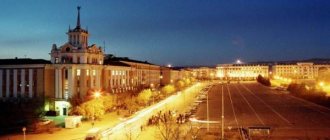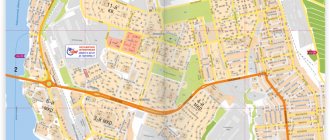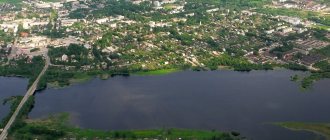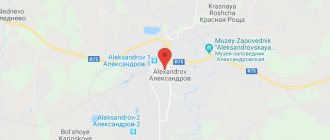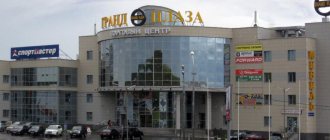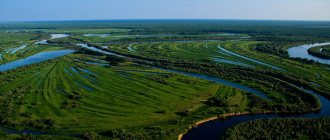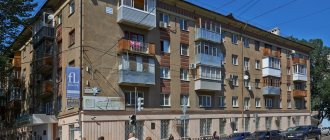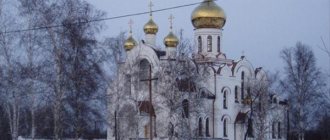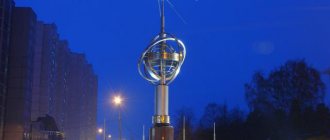The Vladimir region is famous for its rich history and abundance of interesting sights. At the same time, the region cannot boast of its numbers and size. Its area is 29,084 km² - 66th in the list of subjects of the Russian Federation. The population is also small - 1,365,384 residents, which puts the region in 42nd place in the all-Russian ranking. The population density is quite high: 46.95 people. people/km²: six times higher than the Russian average. The density is approximately the same as in the Ivanovo region, two times higher than the Sverdlovsk and Leningrad regions, but almost 4 times less than the Moscow region. The population of the region is declining annually through natural decline and the outflow of young people to other regions.
Alexandrov. Story
The city of Alexandrov, Vladimir region, is famous for events related to Ivan the Terrible. However, it was not founded by this king, but by Vasily the Third, who received a luxurious palace outside the city in 1513. It included palace buildings, residential chambers, and a huge territory surrounded by ramparts and ditches. This whole system was not inferior to the Moscow Kremlin.
This city in the Vladimir region has become a historically significant place. Ivan the Terrible lived here for more than seventeen years of his life. Various negotiations with foreigners also took place here. In this city the king kills his son. After this incident, Ivan the Terrible never returned to Alexandrovskaya Sloboda.
Many buildings in the city are well preserved. Among them:
- Alexander Kremlin.
- The estate of the merchant Pervushin.
- Cathedral of the Nativity of Christ. It was built in 1696, and in 1847 it was completely rebuilt with the money of the merchant Baranov. In 1929, the cathedral was closed. It is currently operational, services are being carried out and restoration work is ongoing.
In the city of Vladimir region there are museums, monuments, churches. Among all existing assets, the residence of Ivan the Terrible is extremely popular. Exhibitions are located on its territory, and there is a house church. The refectory of the seventeenth century has been preserved in the Kremlin. The Assumption and Intercession churches, built in the sixteenth century, are also located here. In the city of Aleksandrov, Vladimir region, there is a museum showing the life of the nineteenth century. This can be seen in the estate of the merchant Pervushin. At first glance, everything here is simple and modest, but every thing is in its place, every element brings its own charm.
List of cities in the Vladimir region of Russia in alphabetical order
Map of Russia with cities. Gismeteo forecast for December 2021. Detailed maps of the regions / Vladimir region - detailed geographical atlas
| Vladimir region road map 2012. Detailed road map of the Vladimir region 2012, scale 1cm:5km | List of villages (towns) of the Vladimir region in alphabetical order |
List of cities in the Vladimir region of Russia in alphabetical order
- Alexandrov from satellite. Detailed large-scale map of the city of Alexandrov, Vladimir region
- Vladimir map large large scale. Plan map of the city of Vladimir, scale 1cm:250m with street names and transit route diagram
- Vyazniki from satellite. Interactive satellite Google map of Vyazniki, Vladimir region
- Gorokhovets from satellite. Interactive satellite map of the city of Gorokhovets, Vladimir region
- Gus-Khrustalny map large scale 1cm:250m. City plan of Gus-Khrustalny with street names and directions
- Gus-Khrustalny satellite map. Interactive Google map of Gus-Khrustalny
- Kameshkovo from satellite. Detailed satellite map of the city of Kameshkovo, Vladimir region
- Karabanovo from satellite. Interactive satellite map of Karabanovo, Vladimir region
- Kirzhach from satellite. Good clear satellite map of the city of Kirzhach, Vladimir region
- Carpet map large scale. Detailed plan of the city of Kovrov with street names and transport directions
- Carpets from satellite. Excellent clear map of Kovrov based on satellite photography
- Kolchugino from satellite. Interactive satellite map of the city of Kolchugino, Vladimir region
- Bonfire from satellite. Interactive satellite map of Kosterevo, Vladimir region
- Kurlovo from satellite. Scalable Google map of Kurlovo
- Lakinsk from satellite. Detailed large-scale map of the city of Lakinsk, Vladimir region
- Melenki from satellite. Scalable satellite map of the city of Melenki, Vladimir region
- Murom map large large scale. Plan map of the city of Murom with street names and transit transport directions
- Petushki satellite map. Google map of the city of Petushki, Vladimir region
- Pokrov map with satellite. Map of the city of Pokrov based on satellite photography
- Rainbow from satellite. Interactive satellite map of Raduzhny, Vladimir region
- The dog from the satellite. Clear detailed satellite map of Sobinka, Vladimir region
- Strunino from satellite. Interactive Google map of the city of Strunino, Vladimir region
- Sudogda from satellite. Scalable satellite map of Sudogda, Vladimir region
- Suzdal map is large. Plan map of Suzdal with street names and transit route diagram
- Suzdal from satellite. Good clear map of Suzdal
- Yuryev-Polsky from satellite. Scalable Google map of the city of Yuryev-Polsky, Vladimir region
Vladimir
The city of Vladimir is a historically significant settlement, founded back in 1108 by Vladimir Monomakh. Initially, it was a huge, powerful fortress located on the edge of the Meshchera forests.
With the coming to power of Yuri Dolgoruky in 1157, Vladimir became the new princely court. The Church of St. George was built on the territory of the fortress.
Over the centuries, the city was rebuilt and expanded. In 1238, it was burned by the Tatars. After this incident, Vladimir was restored, but it became an ordinary city of the Moscow state.
The city has more than twenty architectural monuments, including:
- Assumption Cathedral. This is a whole complex of buildings from different eras. According to legend, the first one was built in 1158. This place houses a large number of Rublev’s frescoes, executed in different years. There are frescoes from 1408.
- Golden Gate. They were built in 1158-1164. This architectural property played the role of a combat and passage tower-fortress. There were five gates in total in Vladimir, but only one has survived to this day. At the end of the eighteenth century, the city was redeveloped. Because of it, all the ditches around the fortress were hidden. Now the gate houses a museum of military valor, dedicated to the assault on Vladimir by Batu Khan.
- Dmitrievsky Cathedral. It was founded in 1194. The building is unusual for its time due to its sculptural decorations. Such execution was extremely rare in Russian architecture. Each façade of the cathedral is decorated with statues, in the center of which is King Solomon.
- Church of St. George the Victorious. The church was originally built in 1157 but burned down. The new building was built only in 1796. The church is active and is a national monument. A chapel in honor of Prince Vladimir was attached to the church. In 1930 the temple was closed. In the eighties, this place was a center for choral singing, but now the church is active again. There is a very beautiful painting inside it, made in the century before last.
- Trinity Church built in 1740.
The city has a monument to Alexander Nevsky and many other interesting places: a chocolate workshop, a spoon museum, museums of the history of the local prison, a museum of optical illusions.
Vladimir is the largest in the region
Vladimir, without a doubt, can be called one of the cradles of the formation of Russian statehood: formed in 990, since the 12th century it has acted as the capital of the influential Grand Duchy of Vladimir. Today it is part of the Golden Ring route, being the main pearl, thanks to which the settlement receives a fairly high tourist flow all year round.
Among all the settlements in the region, Vladimir has the maximum demographic indicators:
- area - 137.014 km²;
- number - 357,024;
- density - 2605.75 people/km².
The latter figure for a regional city is quite high, which is why there are problems with traffic jams. The most difficult situation is in the central neighborhoods, where a significant concentration of cars cannot comfortably move along the ancient narrow streets, and it is also difficult to find a parking space. The situation becomes more complicated in the summer and during the holidays, at the peak of tourist activity: groups of tourists who come on excursions on large buses often impede general traffic.
Also among the problems of Vladimir is the poor ecology: it is among the top 100 most polluted in Russia, and is considered the most unfavorable in this regard for living among other settlements in the region. The atmosphere suffers most seriously from emissions from industrial enterprises, followed by car exhaust gases and landfills. The permissible level of nitrogen dioxide in the air was 13 times higher, and substances such as phenol, benzopyrene, sulfur dioxide and formaldehyde were recorded. There are more than 15 large enterprises operating in the following industries:
- food;
- chemical;
- energy;
- metallurgical;
- light;
- mechanical engineering.
Throughout development, the population continued to increase regularly, with the exception of a slight decline in the nineties of the last century. Since 1599, when 1,200 people lived here, the figure has increased 300 times, and from 2013 to 2021 the number of residents has increased by 10,000. For the most part, this is due to the influx of people from small settlements in the region, traveling for career prospects and income opportunities .
City of Pokrov. A little more history
The history of the city of Pokrov, Vladimir region, begins in the sixteenth century. When the Pokrovskaya Hermitage was located in its place. The monastery grew rapidly, and the settlement around it grew. An interesting fact is that Pokrov is the only city in Russia whose population has always been growing.
Since 1997, the first chocolate factory opened in the city. From that moment his “delicious” story began.
The main asset of the Intercession is the Holy Vvedensky Island Monastery. This is a quiet, peaceful place. He is active.
Rainbow city. Young, but quite large
The city of Raduzhny in the Vladimir region is one of the youngest settlements. It appeared thanks to the creation of the Raduga design bureau, which was involved in testing lasers, energy development and military-industrial developments.
First, they began to build buildings for the bureau employees. After this, residential buildings began to appear. In 1972, the first residential building was built in the town. Thus, one of the most comfortable cities in the region grew on a wetland. Only the best graduates of prestigious universities of the USSR worked and lived here. In 1991, Raduzhny received city status.
New city Rainbow
The settlement is closed, but despite this, life in it is in full swing. There are several schools, kindergartens, a health camp for children, a cadet school, a hospital, a clinic, a swimming pool, a library, and an art school. The town is home to many large enterprises where people develop unique projects.
Every year, talented people come from all the villages, cities of the Vladimir region and from other regions to Raduzhny to take part in the annual Rainbow Strings festival. This is a great opportunity to show off your talent.
In the Vladimir region there are many other unusual cities and towns, each of which has its own unusual history.
Kovrov is large within the region
On the second line of the list is Kovrov, where half the population lives than in the regional center. It occupies the same position in the top of large ones with an area of 57.4 km². In terms of density it is on the third line with a value of 2413.8: in Murom this figure is, albeit slightly, higher. It is worth noting the presence of many suburbs, which forms a fairly densely populated urban agglomeration of about 200,000.
The settlement was founded in the 12th century by Yuri Dolgoruky: then it was considered a small village called Elifanovka. The real history began only under Catherine the Great, who gave it the status of a county town and a new name. Since then, the population has rapidly increased, the maximum jump occurred in the 30-70s of the last century.

